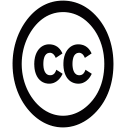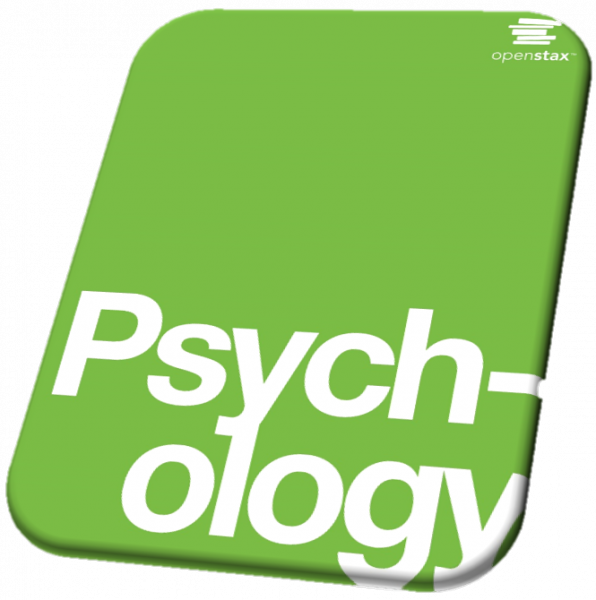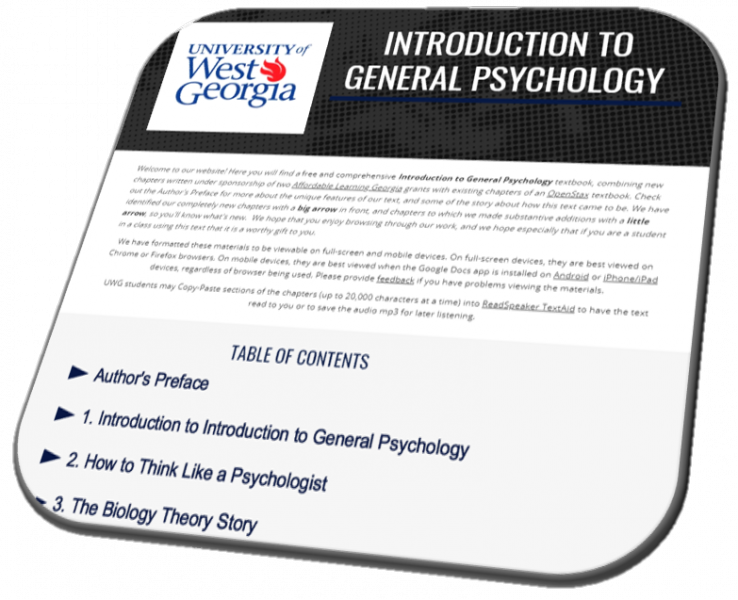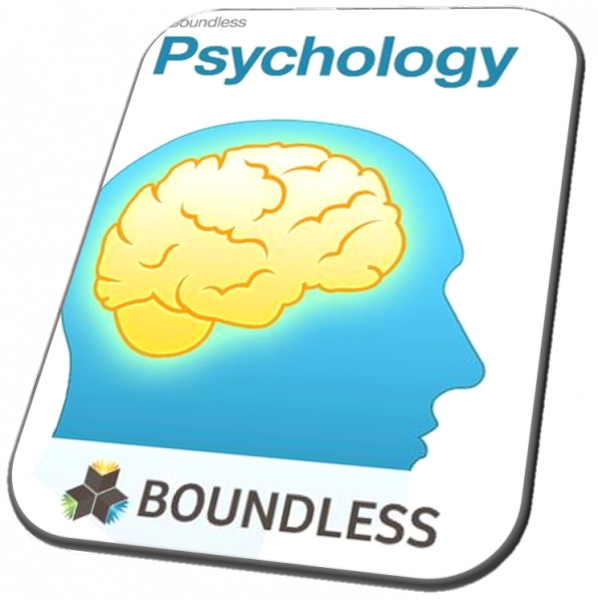Is the Future of Free Textbooks Here Already?
 together with
together with
Melanie Doyle, teacher at Dawson College
Introduction
 Free on-line electronic textbooks in many subject areas have become widely available in recent years, and numerous post-secondary establishments in North America have promoted their adoption instead of relying on the traditional commercial option. Open textbooks are governed by the Creative License protocol which some application allows users to copy, modify, and distribute material as long as credit is given to the original source (https://creativecommons.org/). These trends have been supported by several nonprofit organizations, whose mission is to make education more widely available to the greatest number of students by reducing or eliminating financial costs. Benefits of free on-line books are numerous, including little to no financial cost, environmental friendliness, flexibility, and portability.
Free on-line electronic textbooks in many subject areas have become widely available in recent years, and numerous post-secondary establishments in North America have promoted their adoption instead of relying on the traditional commercial option. Open textbooks are governed by the Creative License protocol which some application allows users to copy, modify, and distribute material as long as credit is given to the original source (https://creativecommons.org/). These trends have been supported by several nonprofit organizations, whose mission is to make education more widely available to the greatest number of students by reducing or eliminating financial costs. Benefits of free on-line books are numerous, including little to no financial cost, environmental friendliness, flexibility, and portability.
This move toward adopting open textbooks can be illustrated by noting a few trends both in Canada and the United States. According to a nonprofit organization called OpenStax, 48% of colleges representing over 2.2 million students in the United States this year are using their resources (Ruth, 2019). Since the launch of the BCcampus initiative in 2012, 270 free textbooks are now available, benefiting about 99000 students in 40 institutions in British Columbia (BCcampus, 2019). Ontario has also launched its portal to promote resources for open education l called eCampus Ontario (https://www.ecampusontario.ca/).
![]() Given the increasing popularity of free open textbooks in North America, it is important that we seriously evaluate the quality of these resources to determine whether they may be suitable for use within Quebec’s English college network. As faculty members in the department of Psychology at Dawson College, we serve on the “General Psychology course committee” that reviews and recommends three textbooks for adoption by the department. Having recently completed this exercise with commercially available books, we felt we were in a good position to undertake such a task for the open textbook option, and VTÉ’s offer to sponsor our research came at an opportune moment.
Given the increasing popularity of free open textbooks in North America, it is important that we seriously evaluate the quality of these resources to determine whether they may be suitable for use within Quebec’s English college network. As faculty members in the department of Psychology at Dawson College, we serve on the “General Psychology course committee” that reviews and recommends three textbooks for adoption by the department. Having recently completed this exercise with commercially available books, we felt we were in a good position to undertake such a task for the open textbook option, and VTÉ’s offer to sponsor our research came at an opportune moment.
The purpose of this project was to evaluate the quality of freely available digital books, in comparison to commercial ones, on introductory psychology to determine whether we could recommend one or more titles for adoption in General Psychology courses at Dawson College. After an extensive internet search, we identified five such books. We carefully read chapters on Biology & Behavior, Learning, and Memory, and rated them on a five-point scale on the depth and breadth of the content as well as whether the writing style was engaging to read. In addition, book-specific resources, if available, were consulted and evaluated. These books and any accompanying resources were considered in relation to accessibility, which was defined as whether they could be easily read and navigated with the help of a screen reader used by people who are blind or visually impaired. This issue is important in the light of disability-specific legislations in both Canada and the United States. However, we did not take into account other disabilities as our resources and time were limited. We also conducted two surveys to determine how students currently taking introductory psychology at the college and faculty who regularly teach the course feel about using open electronic textbooks. We will first present a review of each of the five books and include the results of the two supporting surveys. We will end the article by making overall remarks regarding the feasibility of adopting open textbooks in our courses.
Review of books
Psychology by OpenStax
 The first book to be presented is sponsored by OpenStax at Rice University, and it is entitled Psychology written by Spielman and others in 2014.
The first book to be presented is sponsored by OpenStax at Rice University, and it is entitled Psychology written by Spielman and others in 2014.
The book is available in multiple formats, is printable, and is licensed as Creative Commons Attribution 4.0 International (CC-BY 4.0).
Each of the 16 chapters is divided into several modules, and each subsection ends with a summary, various types of review questions for students, and a glossary of terms. In general, the book covers the necessary content needed for an introductory psychology course at the college level in a conceptually sound manner. However, the length of chapters varies quite a bit, for instance, the topics of ‘History of Psychology’ and ‘Careers in Psychology’ are covered in too much detail. As for readability and engagement, the book ranks average on this characteristic. This is because although the language is grammatically sound, it is dry and not as engaging as some commercially available titles. The book has plenty of resources for instructors, available upon request. The PowerPoint slides for each chapter are a good starting point, but the instructors may wish to add more to suit their needs. The test bank includes multiple-choice and essay-type items that are of high quality. Video and animation links are provided within the book, but some of them appear to be broken. However, OpenStax frequently revises the content as well as updates information based on users’ feedback, so this should not dissuade anyone from using the book. One noteworthy resource OpenStax provides is called “The Learning Code”, which is a browser extension, allowing instructors to individualize the textbook to suit their needs by permitting the insertion of questions, comments or additional media. As for accessibility, the book is fairly easy to navigate and search, however, figures and images lack detailed descriptions, which does not provide a blind reader with a clear idea of the visual information being displayed. Overall, though, this book can be recommended as is, but most instructors may want to supplement the existing resources.
General Psychology: An Introduction
 A non-profit called ‘The Noba Project’, sponsored by the Diener Education Fund, includes over 80 separate modules on topics in the field of psychology. From these modules, several shorter books have been compiled, and the one we reviewed is titled General Psychology: An Introduction by Kearns & Lee.
A non-profit called ‘The Noba Project’, sponsored by the Diener Education Fund, includes over 80 separate modules on topics in the field of psychology. From these modules, several shorter books have been compiled, and the one we reviewed is titled General Psychology: An Introduction by Kearns & Lee.
It consists of 15 chapters; some of them divided into modules and has 566 pages. Its license is a CreativeCommons Attribution-NonCommercial-ShareAlike 4.0 International (CC BY-NC-SA 4.0).
The content is mostly in line with the required curriculum, but a few notable exceptions should be pointed out. It was strange to see the omission of negative reinforcement, types of punishment and the discussion of sleep disorders. The chapters appear to be written by experts in different fields, so the writing quality is variable. Some chapters could be considered engaging while others are couched in challenging language for college students. Resources are plentiful, videos and images are embedded but some of the former are produced by students, whose quality is often poor. Each PowerPoint includes sufficient number of slides as well as links to videos and animations. Additionally, discussion questions are part of the presentation. The test bank, practice materials and instructor manual are of decent quality. Concerning accessibility, figures and images are described with limited detail and the tables are not laid out in a way that allows for ease of navigation across columns and rows with a screen reader. Overall, this book cannot be recommended for college students because of the inconsistent writing quality and problems of accessibility. At the same time, instructors may use the book and its supplements as additional resources while conducting their courses.
UBC’s Introduction to Psychology
The University of British Colombia (UBC) in its BCcampus hosts many books in various disciplines including Introduction to Psychology – 1st Canadian Edition. The book was originally written by Stangor and was adapted for a Canadian audience by Walinga in 2018.
 This book, while slightly longer than the others with 792 pages, is openly available in many different formats and licensed under Creative Commons Attribution-Non Commercial-ShareAlike 4.0 International (CC BY-NC-SA 4.0).
This book, while slightly longer than the others with 792 pages, is openly available in many different formats and licensed under Creative Commons Attribution-Non Commercial-ShareAlike 4.0 International (CC BY-NC-SA 4.0).
Once again, topic and chapter length vary and sometimes have an interesting arrangement of content. For instance, the nervous system is discussed after the brain and together with the endocrine system; while discussing brain scanning techniques, fMRI is discussed, but MRI is not; Mendelian genetics is not explained but behavioral genetics are, which appear in the chapter on personality! The book contains Canadian statistics; metric units of measurements as well as some Canadian vignettes as chapter openers, however, these stories are often not commented upon elsewhere in the chapters. The writing quality is acceptable and grammatically sound but once again, on the dry side. It is clear and concise, but not engaging. Plenty of resources are provided and are of decent quality. Accessibility is similar to OpenStax, meaning that the book is easy to search and navigate but descriptions of figures and images are sparse. The book can be used as is, however, one consideration is that there are hardly any references as of 2015 and it is not known whether the book will be revised soon. In addition, the new Canadian regulations regarding cannabis use should replace the older content found in the book.
UWG’s Introduction to Psychology
 The fourth book reviewed was titled ‘Introduction to Psychology’ and is a remix of newly created chapters by University of West Georgia (UWG) faculty Kunkel, Bagwell & McCrae in 2018, but is based on an existing book from OpenStax’s title reviewed earlier.
The fourth book reviewed was titled ‘Introduction to Psychology’ and is a remix of newly created chapters by University of West Georgia (UWG) faculty Kunkel, Bagwell & McCrae in 2018, but is based on an existing book from OpenStax’s title reviewed earlier.
This book is licensed as a CreativeCommons Attribution-NonCommercial-ShareAlike 4.0 International (CC BY-NC-SA 4.0).
Please see our previous review for Spielman text specific comments. The authors add information in every chapter, making psychology more relevant to the student by linking the existing content to make readers more aware of how and why a certain topic is important. This textbook is the only one with an emphasis on self-awareness. In addition, from a pedagogical standpoint, the authors are adept at revisiting concepts from previous chapters to discuss in new contexts and reiterate why they are important to know. However, while this material is engaging, inviting, and well written, it adds significantly to the length of each chapter, and therefore reluctant readers may be discouraged from reading. The video links embedded in the new content all work and are relevant and current. There are no additional slides or test bank questions available at present, but lecture outlines, class activities, and some tests from other teachers are on a shared file that is accessible upon request. The complete book is not available for download and instead each chapter is a separate Google.doc file. Concerning accessibility, each chapter file is difficult to download because the links are not given specific textual links and only appear as images. However, multiple formats are available for download and once downloaded, individual chapters are easy to search and navigate. In summary, the extra material added is interesting, engaging, and relevant but the extra length, lack of additional resources, and problems with accessibility make it difficult for us to recommend it for general use. At the same time, the book may serve as a useful additional resource for both students and instructors or in a flipped classroom setting.
Psychology by Boundless
 The last book, titled Psychology and compiled by Boundless, is sponsored by California Open Online Library (COOLforEd).
The last book, titled Psychology and compiled by Boundless, is sponsored by California Open Online Library (COOLforEd).
Most of its content is licensed under CreativeCommons Attribution-ShareAlike International 4.0 (CC BY-SA 4.0)
Lumen Learning collaborated with the Boundless team to import and host materials before Boundless ceased operations and maintains the book in the condition it was received. Lumen states that there may be issues with formatting, accessibility, and the degree to which content remains current, accurate, and complete. Attributions and licensing links at the bottom of each ‘page’ seem to indicate that much of the information contained in the book comes from Wiki. The book covers all the topics for an introductory psychology course but lacks depth, as such; the writing is basic and not very inviting. It presents more historical material than current studies. ‘Boundless’ is only available for download in EPUB, which does not open on most computers. It is difficult to search, each module must be converted into a PDF file, and only then can it be printed. Hyperlinks are only included in the introduction and one must return to the table of contents to choose another topic. While reading, it is not possible to know where one is within a chosen module, which makes it difficult to return and resume reading. As for accessibility, images and figures have short descriptions only. Lumen indicates that quiz files and lecture slides are available for this textbook and to contact them for access. However, we did not manage to get a response from them for access to the files for review. Given these considerations, the book cannot be recommended for use.
Lumen also provides access to a course on introductory psychology based on OpenStax’s psychology book but with additional resources.
Access to these was granted upon request. The quality of the PowerPoint slides is above average, but test bank questions are available only for integration into learning management systems and thus could not be evaluated. Each chapter also includes assignment recommendations with rubrics for instructors. Lumen is a for-profit organization that serves educational institutions in the United States only and charges a small fee per student. Any instructor outside the US can adopt the course as is but without support from Lumen. As such, this textbook may be of little interest to the college network in Quebec.
Summary of Five Introduction to Psychology Open Textbooks


Surveys
Instructors

We surveyed 21 instructors representing an overwhelming majority in our department who teach General Psychology to find out what they thought of using open textbooks. When asked if they would be interested in using an open source textbook, 20 out of 21 instructors were in favor and only 1 teacher responded that a hard copy was preferred. When asked if the availability of instructor resources would influence that decision, teachers were equally divided, with 52% saying yes. Lastly, about 30% said accompanying resources were not important to them. At the same time, 86% indicated access to a test bank would be desirable and about half would like an instructor’s manual, 70% also preferred having textbook specific slides.
Students
For the student survey we obtained 639 responses, which represents approximately 2/3 of the students taking General Psychology this semester. When students were asked about their preferences about using digital textbooks, 52% said they would use this option only if printing were allowed, whereas 38% did not mind availability of printing, only 10% would prefer hard copies of their textbooks. In conclusion, an overwhelming percentage of faculty and students are open to the idea of using a free electronic textbook, but for many, being able to print is important.
Overall Conclusions
 Based on our review, we are impressed with the attempts so far of individuals and organizations to make available free textbooks as well as resources for an introductory level course in psychology. The momentum established over the last 6 years promises great things to evolve in the future. On the positive side, the content covered in these books should meet the requirements for a general psychology course at the college level in Quebec. The writing in many instances is simple and easy to follow and most books come with reasonably valuable resources. They can be printed, are available in multiple formats and their content can be used as is, modified or adapted as needed by the instructor. All five books have implemented some accessibility standards, but none received a perfect rating. The two books we have recommended are certainly usable, but we hope for substantial improvements in this area. Commercial publishers in recent years have made significant strides to improve accessibility for all, mainly to comply with relevant legislation, which should ultimately impel nonprofit organizations to do likewise for open textbooks.
Based on our review, we are impressed with the attempts so far of individuals and organizations to make available free textbooks as well as resources for an introductory level course in psychology. The momentum established over the last 6 years promises great things to evolve in the future. On the positive side, the content covered in these books should meet the requirements for a general psychology course at the college level in Quebec. The writing in many instances is simple and easy to follow and most books come with reasonably valuable resources. They can be printed, are available in multiple formats and their content can be used as is, modified or adapted as needed by the instructor. All five books have implemented some accessibility standards, but none received a perfect rating. The two books we have recommended are certainly usable, but we hope for substantial improvements in this area. Commercial publishers in recent years have made significant strides to improve accessibility for all, mainly to comply with relevant legislation, which should ultimately impel nonprofit organizations to do likewise for open textbooks.
 On the flip side, while some books are undergoing small revisions, there is no indication if or when they will be updated to accommodate new research in the field. However, any of these books may be revised by anyone at any time, depending on one’s expertise, capabilities and resources. As such, this task could be undertaken by the Quebec College Network with support from grants as they may become available. Finally, an important point concerning writing style must be mentioned. Getting students to read textbooks is important and sometimes challenging, but if the language is not engaging from their perspective, many of them will remain reluctant to open and consume the book content. Although grammatically sound, the language employed in the books we evaluated cannot be considered highly creative, as is true of a minority of commercially available books. For example, in one top selling commercial book by Myers, there are numerous passages of writing which are creative, entertaining, and engaging, without sacrificing scientific rigor. The author manages to make every chapter relevant to the student by using analogies and other decorative linguistic tools. We will cite one quotation from his book to illustrate these assertions:
On the flip side, while some books are undergoing small revisions, there is no indication if or when they will be updated to accommodate new research in the field. However, any of these books may be revised by anyone at any time, depending on one’s expertise, capabilities and resources. As such, this task could be undertaken by the Quebec College Network with support from grants as they may become available. Finally, an important point concerning writing style must be mentioned. Getting students to read textbooks is important and sometimes challenging, but if the language is not engaging from their perspective, many of them will remain reluctant to open and consume the book content. Although grammatically sound, the language employed in the books we evaluated cannot be considered highly creative, as is true of a minority of commercially available books. For example, in one top selling commercial book by Myers, there are numerous passages of writing which are creative, entertaining, and engaging, without sacrificing scientific rigor. The author manages to make every chapter relevant to the student by using analogies and other decorative linguistic tools. We will cite one quotation from his book to illustrate these assertions:
How do you create meaning from the blizzard of sensory stimuli bombarding your body 24 hours a day? Meanwhile, in a silent, cushioned, inner world, your brain floats in utter darkness. By itself, it sees nothing. It hears nothing. It feels nothing. So, how does the world out there get in?
(DeWall & Myers, 2017, p. 134)
If this type of creative, engaging, and inviting writing can be made part of open books, they will then compete strongly with commercial titles. Nevertheless, we can confidently conclude that the two books we have recommended are ready and suitable for use at Dawson, and others in the college network may wish to give them serious consideration, as the benefits of open textbooks easily outweigh their current limitations.
References
BCcampus (2019, January 1). Open textbooks stats. Retrieved from https://open.bccampus.ca/open-textbook-stats/
DeWal, N. C., & Myers, D. G. (2017). Psychology in everyday life (4th ed.). New York: Macmillan.
Ruth, D. (2019, January 1). 48 percent of colleges, 2.2 million students using free OpenStax textbooks this year. Retrieved from https://news.rice.edu/2018/08/01/48-percent-of-colleges-2-2-million-students-using-free-openstax-textbooks-this-year/

